What Is Fifference From Potting Soil And Garden Soil
This is an archived article and the information in the article may be outdated. Please look at the time stamp on the story to see when it was last updated.
The difference between potting soil and garden soil
For new gardeners, all soil probably seems the same. However, the potted cactus you keep in your living room won't thrive in the same soil the marigolds in your garden do, so you can't use all soil interchangeably.
Potting soil and garden soil are the two most common soil types, so understanding the difference between them is vital if you want your plants and flowers to grow.
If you mainly grow your plants in containers, potting soil is the best option. If you're looking for soil specifically for your garden beds, though, garden soil is the better option. Keep reading to learn all you need to know about each type, so you always make the right choice for your gardening projects.
What is potting soil?
Despite its name, potting soil doesn't contain soil. Instead, the mixture, sometimes called potting mix, features a blend of peat moss, perlite, bark, compost and other rocks and minerals.
Because it's soil-free, you don't have to worry about potting soil containing any fungus or other microorganisms that might be harmful to your plants. It is a safe option for plants grown in pots and features a loose texture that allows it to drain more effectively, so you don't have to worry about the roots getting too wet.
You can find some potting soils that contain added fertilizers or crystals to help the plants retain water. Special potting soil blends are also sold for specific plants like roses, orchids and succulents. There are even custom blends for starting seeds.
Potting soils are available in bags in various sizes. It usually costs between $0.30-$2 per pound.
Benefits of potting soil
- Its loose texture prevents potting soil from compacting, helping it drain more quickly. This allows plants' roots to experience healthy root growth.
- Thanks to the blend of materials, you can use potting soil straight from the bag without adding any amendments.
- Potting soil is available in customized blends for specific plants to maximize healthy growth.
- Because it doesn't contain any microorganisms, there's less risk of disease for your plants and flowers.
Drawbacks of potting soil
- Potting soil is typically more expensive than garden soil, making it a poor option for large areas like a garden.
- Potting soil doesn't contain much organic material, so it doesn't provide enough nutrients to grow across multiple seasons.
Top potting soils
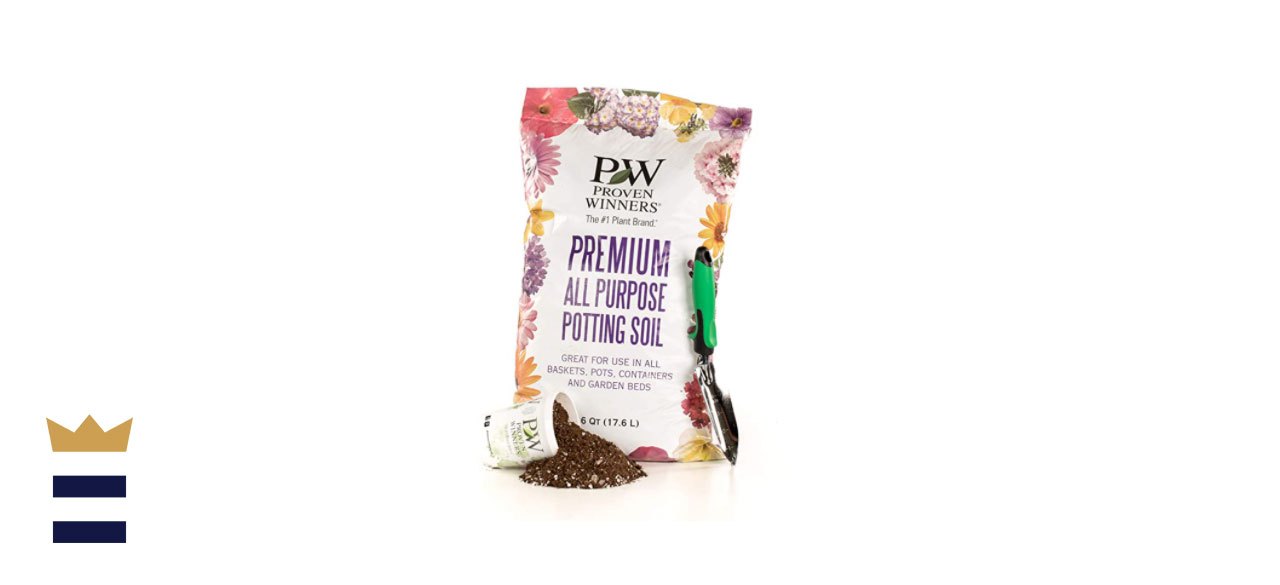
Proven Winners Premium All-Purpose Potting Soil
This potting mix offers a medium weight that allows for adequate drainage and plenty of air around your plants' roots. It helps plants stay moist even in hot weather, too. The soil can become compacted when used for outdoor potted plants. Sold by Amazon and Home Depot
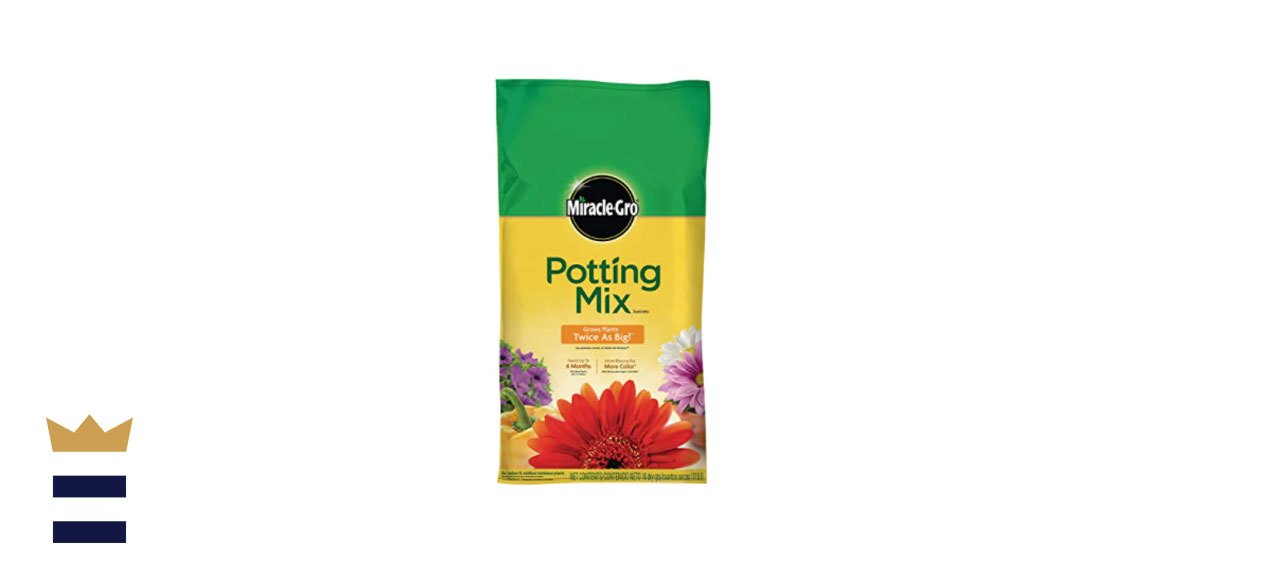
Miracle-Gro Potting Mix
We're fans of this potting soil because it's effective for both indoor and outdoor container plants. It promotes excellent drainage and airflow to boost plant growth and even features added fertilizer to feed various plants. The texture can be a bit too light for some plants. Sold by Amazon and Home Depot

FoxFarm Ocean Forest Potting Soil
This potting soil is ready for use right out of the bag and offers an adjusted pH to provide optimum fertilization. The potting mix components contain earthworm castings, bat guano and crab meal to feed container plants. Its price tag may turn off some buyers. Sold by Home Depot and Amazon
What is garden soil?
Garden soil contains topsoil that's fortified with compost, sand, clay, loam and other organic materials to provide plenty of nutrients for plants. It's heavier than potting soil and retains water more effectively.
Because it's nutrient-rich and holds water well, garden soil is ideal for in-ground plants and garden beds. From time to time, though, it usually requires amendments to give it the proper consistency and restore lost nutrients.
Like potting soil, garden soil is available in bags in a range of sizes. You'll typically pay between $0.20-$1 per pound.
Benefits of garden soil
- Garden soil is more affordable than potting soil, so it's more economical for large areas like gardens.
- Garden soil contains a high amount of organic material so that it can feed plants for long periods.
- Garden soil packs well around in-ground plants' roots to help them develop a robust and sturdy base.
- You can easily renew garden soil by adding scraps from your kitchen to the soil.
Drawbacks of garden soil
- Garden soil doesn't work well for indoor plants because it can prevent roots from breathing and draining well in containers.
- Because it contains organic materials, garden soil is more prone to microorganisms that can cause plant disease.
Top garden soils
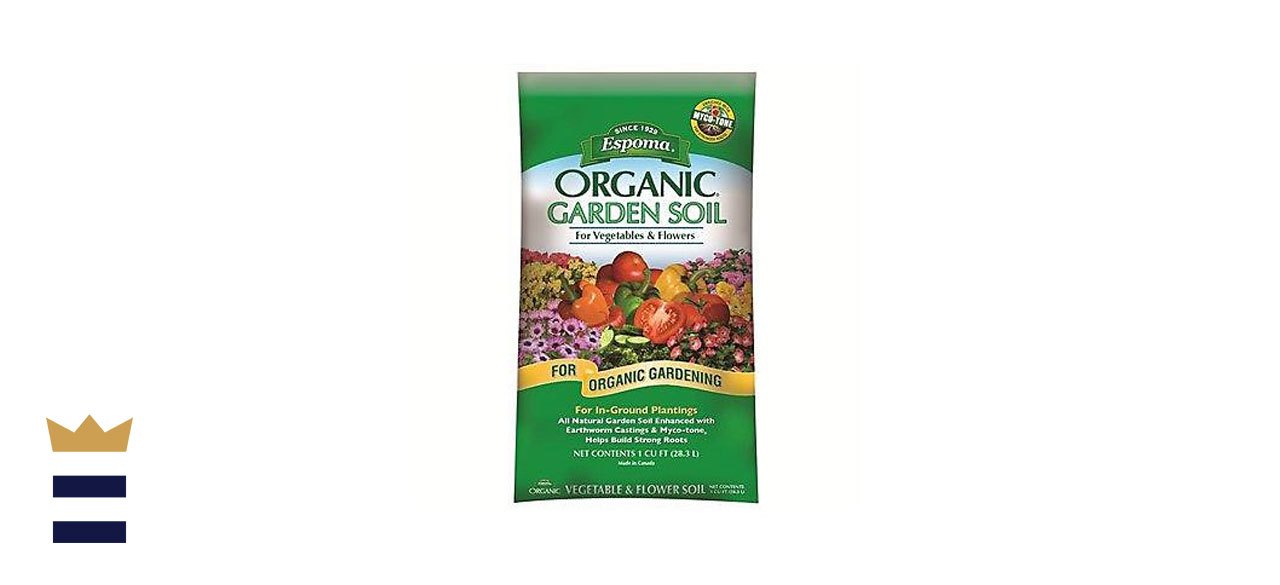
Espoma Company Organic Vegetable and Flower Soil
This garden soil features an organic formula with earthworm casings and peat moss to provide plenty of nutrients for in-ground plants. It doesn't contain any insects either and works particularly well for plants grown in shady areas. The soil is somewhat heavy, though, so it isn't the best option for all plants. Sold by Amazon
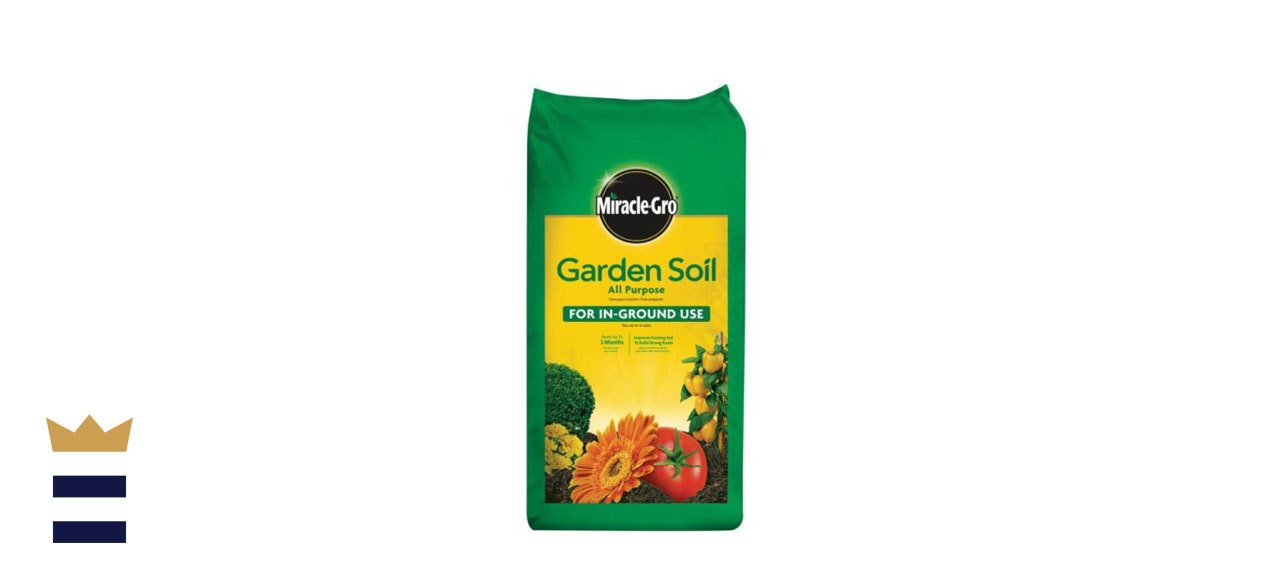
Miracle-Gro All Purpose Garden Soil
We love this garden soil for annuals, perennials, vegetables, fruits and other in-ground garden plants. It's fortified with continuous-release plant food to help promote healthy growth for up to three months. Some buyers complain about quality control issues, though, with some bags containing many twigs. Sold by Home Depot
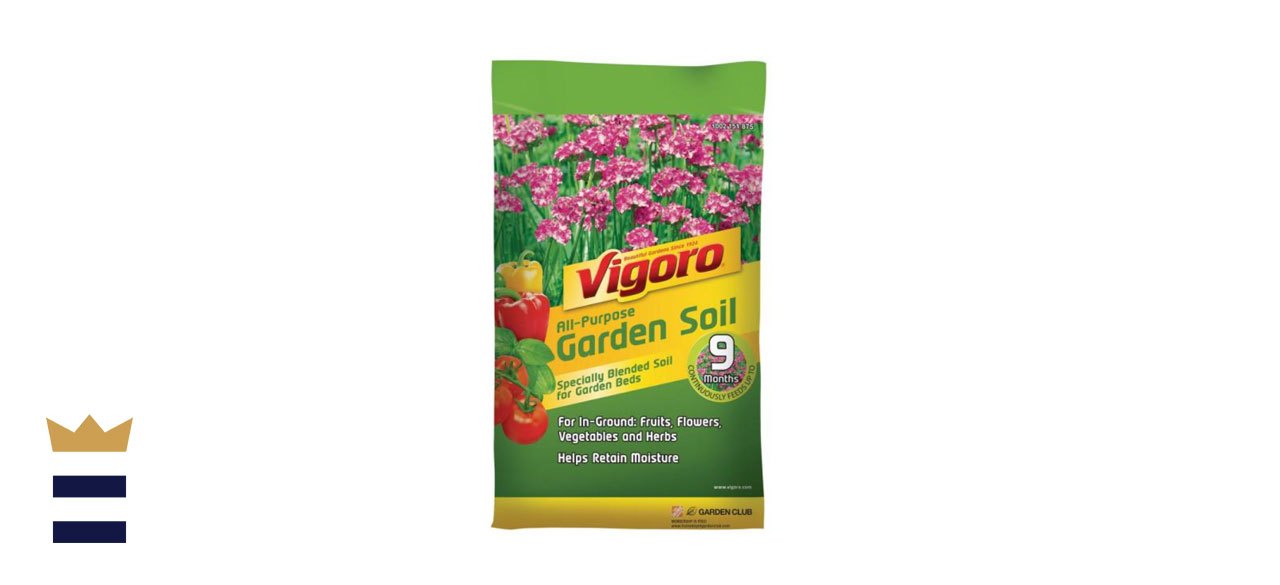
Vigoro Garden Soil
This garden soil is specially blended for in-ground plants, including fruits, vegetables, herbs and flowers. It effectively retains moisture and contains additives to feed the plants for up to 9 months. Some bags contain wood chip pieces. Sold by Home Depot
Should you get potting soil or garden soil?
It all depends on where and how you're planting. If you're growing plants in pots and other containers, potting soil is the way to go. For in-ground plants, you're better off with garden soil.
Jennifer Blair is a writer for BestReviews. BestReviews is a product review company with a singular mission: to help simplify your purchasing decisions and save you time and money.
Copyright 2021 BestReviews, a Nexstar company. All rights reserved.
Suggest a Correction
What Is Fifference From Potting Soil And Garden Soil
Source: https://fox8.com/reviews/br/lawn-garden-br/flowers-plants-br/potting-soil-vs-garden-soil/
Posted by: nelsonhadvaid.blogspot.com

0 Response to "What Is Fifference From Potting Soil And Garden Soil"
Post a Comment